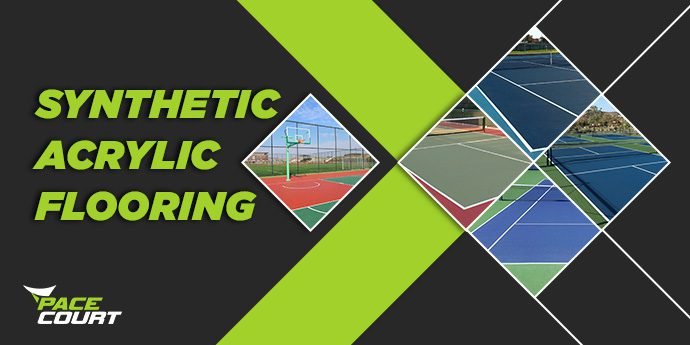Acrylic flooring is recognized for its durability, aesthetic appeal, and flexibility. Tailoring it for various settings requires a keen understanding of each environment's unique demands. This article delves into the nuances of acrylic sports flooring in urban, rural, outdoor, and indoor scenarios, highlighting the environmental effect on sports surfaces in each context.
1. Urban Environments:
Difference: Urban settings are often characterized by dense infrastructures, limited space, and high levels of pollution.
Challenges: In urban areas, sports facilities might be in close proximity to industrial zones or high-traffic roads, which can expose the acrylic floor to more dirt, dust, and chemicals. There's also a higher probability of encountering space constraints, leading to smaller-sized courts or fields.
Best Practices: Proper sealing of the acrylic sports flooring can help in making it resistant to chemicals and pollutants. Also, since urban settings tend to attract a lot of users due to the dense population, ensuring regular maintenance like sweeping, cleaning, and occasional resurfacing becomes essential. Adequate drainage should be provided to avoid water accumulation during rains or cleaning.
2. Rural Environments:
Difference: Rural spaces generally offer more expansive areas, with exposure to natural elements and perhaps less human-made pollution.
Challenges: Flooring in rural areas might be more susceptible to damage from natural factors like tree roots growing beneath, small wildlife interference, and exposure to more natural dirt and debris. There might also be less accessibility to professional maintenance services.
Best Practices: To tackle natural interferences, it's wise to ensure the underlying ground is thoroughly prepped before laying down the acrylic surface. Regular visual inspections can help identify and rectify damages early. In rural setups, having a good DIY maintenance kit can be beneficial due to the potential lack of professional services.
3. Outdoor Settings:
Difference: Outdoor acrylic sports floors face direct exposure to elements like sun, rain, wind, and temperature fluctuations.
Challenges: UV rays can cause the flooring colour to fade over time. Rainwater, if not properly drained, can lead to slippery surfaces or, in worst cases, water damage. Temperature changes can cause the material to expand or contract, possibly leading to cracks.
Best Practices: For outdoor settings, UV-resistant coatings are a must to prevent colour fading. Sloping the floor slightly and ensuring good drainage can prevent water accumulation. Expansion joints or specialized acrylic mixes that resist temperature-induced contractions or expansions can be beneficial.
4. Indoor Settings:
Difference: Indoors, sports flooring is protected from the whims of nature but can experience challenges like humidity, artificial lighting, and heavy foot traffic.
Challenges: Indoor environments, especially without proper ventilation, can become humid, leading to a sweaty, slippery surface. Artificial lighting can sometimes alter the perceived colour of the floor. The concentrated use of certain areas, like near goalposts, can lead to uneven wear.
Best Practices: Installing proper ventilation or dehumidifiers can regulate humidity levels. Choose acrylic colours that appear consistent under artificial lighting. Rotate court usage, if possible, or consider slightly thicker applications in high-traffic zones for longer wear.

Conclusion
While the base product - acrylic sports flooring by Pacecourt - remains consistent in its quality and benefits, the environmental effect on sports surfaces plays a significant role in its durability and appearance. Depending on the environment in which it's placed, there are specific considerations to bear in mind. A thorough understanding of these environments and their challenges, influenced by the environmental effect on sports surfaces, will ensure that the sports flooring not only looks great but also stands the test of time.





